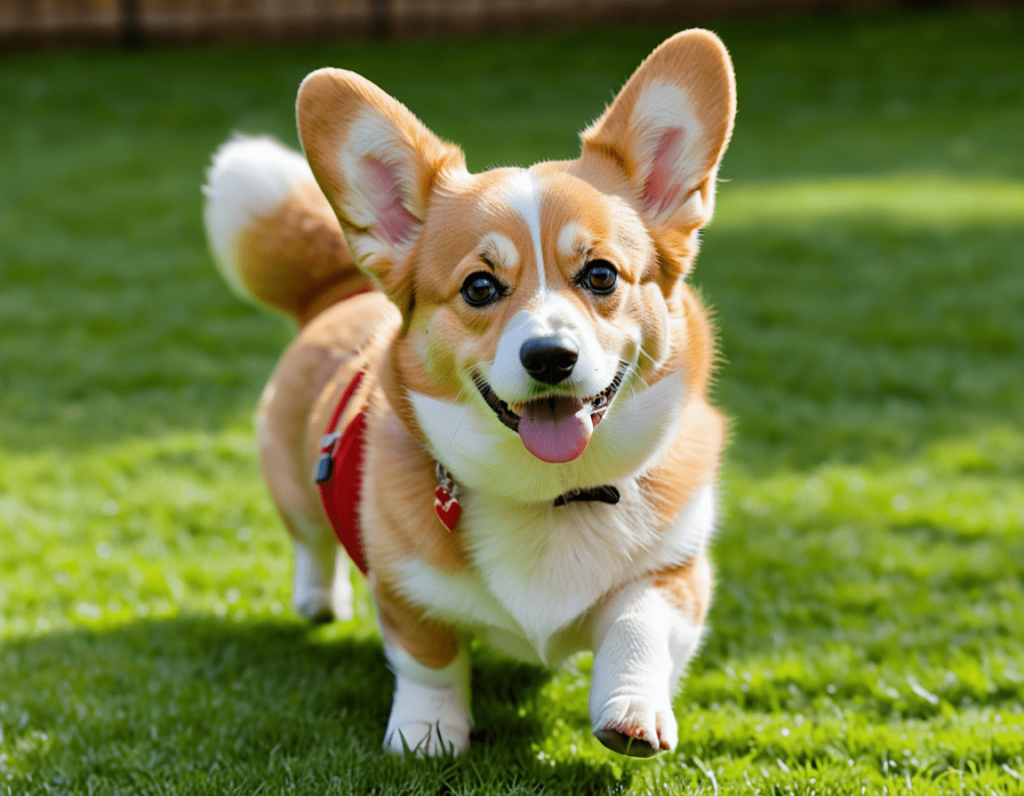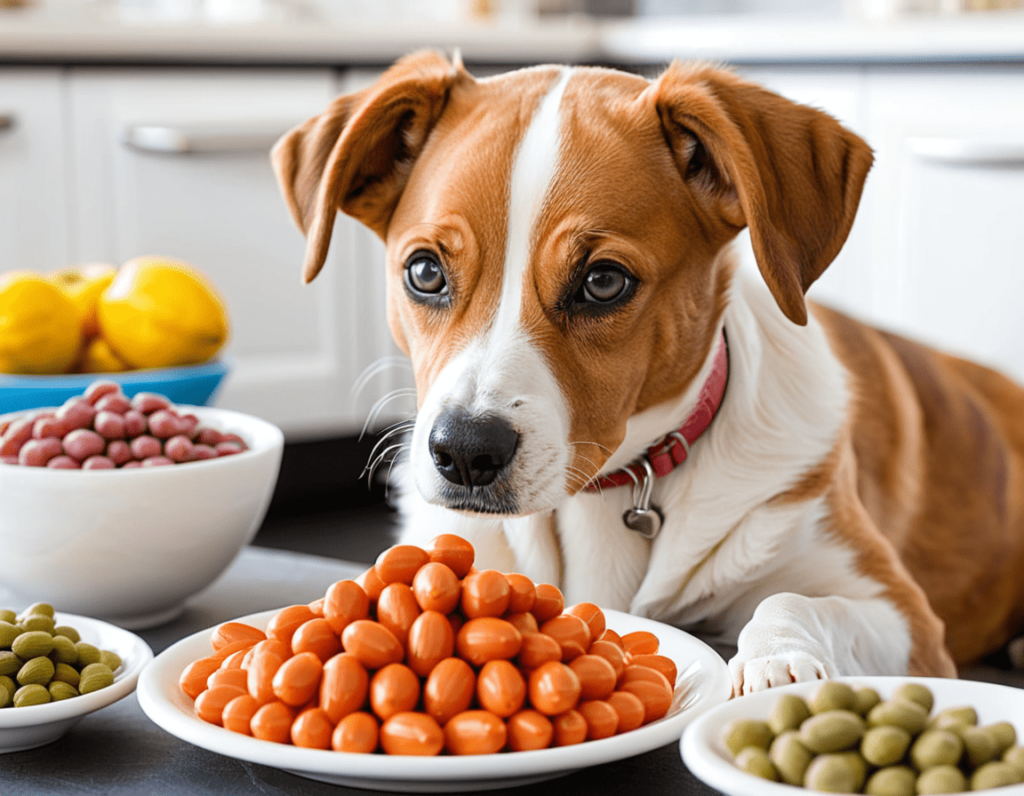
Essential Dog Commands: A Simple Guide for Happy Pups and Their Humans
Dogs are more than just pets; they are our companions, guardians, and, let’s be honest, our furry little shadow monsters. Training your dog to respond to essential commands not only helps ensure their safety but also strengthens your bond. Plus, who doesn’t want a well-behaved pup that listens to them? Imagine the look on your neighbour’s face when your dog fetches the newspaper instead of chewing it up! So, let’s dive into the essential dog commands you need to teach your canine companion.
1. Sit
This is often the first command new dog owners teach their furry friends, and for good reason. Teaching your dog to sit can help prevent jumping and keep them calm during chaotic moments, like when the pizza delivery guy arrives.
How to Teach:
- Hold a treat close to your dog’s nose.
- Move your hand up, allowing their head to follow the treat, which should cause their bottom to lower.
- Once they’re in a sitting position, say “Sit,” and give them the treat!
Funny Tip: If your dog refuses to sit, just pretend you’re a dog whisperer and say, “Just imagine there’s a squirrel!” They might just plop down to strategise their next move!
2. Stay
This command is crucial for keeping your dog in one place, especially when you need them to not chase after that squirrel or your neighbour’s cat.
How to Teach:
- Start with your dog in the “Sit” position.
- Open your palm in front of you and say, “Stay.”
- Take a few steps back. If they stay put, reward them with a treat. If they move, simply guide them back and try again.
Funny Tip: Make sure to practice this one during dinner prep. “Stay” means they’ll have to resist the urge to become a furry vacuum cleaner while you’re cooking!
3. Come
The “Come” command is a lifesaver, especially when your dog spots something interesting and decides to follow it. You want them to come to you, not join the squirrel convention in the park!
How to Teach:
- Start with your dog on a leash.
- Say their name followed by “Come” while gently pulling on the leash.
- When they reach you, reward them with treats and praise.
Funny Tip: If your dog hesitates, pretend you have their favourite toy hidden behind your back. Suddenly, you’ll be the most interesting thing in the room!
4. Down
The “Down” command can help keep your dog calm during exciting moments, like when a neighbour decides to do a cartwheel in front of your house.
How to Teach:
- Start with your dog in the “Sit” position.
- Hold a treat close to their nose and slowly move it to the ground.
- As they follow the treat down, say “Down.” Once they’re lying down, give them the treat!
Funny Tip: If they refuse to go down, you might have a four-legged couch potato. Just tell them it’s time to become a “hot dog”!
5. Leave It
This command is all about impulse control. Whether it’s a crumb of food on the floor or a sock that’s just too tempting, teaching “Leave it” can save you from many potential messes.
How to Teach:
- Place a treat in both hands. Show one to your dog while keeping the other hand closed around the second treat.
- Say “Leave it” as they try to get to the treat in your open hand.
- When they stop trying to get it, reward them with the treat from your closed hand.
Funny Tip: Just don’t be surprised if your dog gives you a side-eye, wondering why you’re not sharing your delicious snack!
6. Heel
Teaching your dog to walk nicely on a leash is a game changer. No one wants to be dragged down the street like they’re in a dog sled race!
How to Teach:
- Use a treat to keep your dog next to you as you walk.
- Reward them when they stay by your side, saying “Heel.”
Funny Tip: You can always pretend you’re in a fancy dog show. “Look at us, we’re the world’s best synchronised walkers!”

7. Off
The “Off” command is perfect for preventing your dog from jumping on furniture, visitors, or anyone wearing white pants (you know who you are). It helps establish boundaries, ensuring your pup knows when it’s not time to get cosy on your lap or that delicate sofa.
How to Teach:
- When your dog jumps up on you or furniture, say “Off” in a firm but calm voice.
- When they get down, reward them with praise or a treat.
Funny Tip: If your dog seems confused, just pretend you’re a bouncer at an exclusive club. “Sorry, pup, no jumping allowed!”
8. No
“No” is one of the most powerful commands you can teach your dog. It helps set limits and communicate what behaviours are unacceptable. It’s like having a universal remote for their antics!
How to Teach:
- Use a firm tone to say “No” when your dog engages in unwanted behaviour.
- Once they stop, redirect them to a more acceptable activity and reward them.
Funny Tip: If your dog keeps pushing boundaries, consider hiring a “behaviour consultant.” Just kidding! Just be the boss of your own household.
9. Wait
“Wait” is a versatile command that can be used before mealtime, when you open the door, or before letting them jump into the car. It teaches patience, which is essential for dogs who have zero chill.
How to Teach:
- With your dog in a “Sit” position, open the door slightly or prepare their food.
- Say “Wait” and reward them for staying put.
Funny Tip: You can always pretend you’re doing a “dramatic movie scene” while they wait. “Will they get the treat? Will they get through the door? Stay tuned!”
10. Fetch
This command is more of a game than a command, but it’s essential for keeping your dog active and entertained. Plus, it saves you from chasing them around the yard when they find something “interesting” (like that one sock you’ve been looking for).
How to Teach:
- Start by throwing a ball or toy a short distance.
- When your dog brings it back, reward them with praise or another throw!
Funny Tip: Just remember, if they bring back a stick or a rock instead, it’s their way of saying, “Look, I found treasure!”
Wrapping It Up
By teaching these essential commands, you’re not just training your dog; you’re also creating a solid foundation for a wonderful partnership. Remember, training takes time and patience, but it’s also a chance to share some laughs and build a bond. And who knows? With a bit of humour and persistence, you might just end up with the most well-behaved dog in the neighbourhood—just don’t let that go to their heads!

Final Thought
Training your dog is like playing a game of hide and seek: sometimes you find treats, sometimes you find your favourite shoe, and sometimes you just need a good laugh. So grab those treats, channel your inner dog trainer, and let the fun begin!
Essential Dog Commands FAQs
1. Why is training my dog important?
Answer: Training your dog is essential for several reasons. It helps improve their behaviour, ensures their safety, and strengthens the bond between you and your furry friend. A well-trained dog is generally happier and more confident, leading to a better relationship with their human!
2. What are the basic commands every dog should know?
Answer: The basic commands every dog should know include:
- Sit
- Stay
- Come
- Down
- Leave it
- Off
- No
- Wait
- Fetch
These commands form the foundation for good behaviour and can be built upon as your dog learns more advanced tricks.
3. How do I start training my puppy?
Answer: Start training your puppy with short sessions of 5 to 10 minutes, focusing on one command at a time. Use positive reinforcement, such as treats and praise, to encourage good behavior. Keep it fun and consistent, and don’t forget to celebrate their successes!
4. How long will it take to train my dog?
Answer: The time it takes to train a dog varies based on factors like age, breed, and individual temperament. Generally, with consistent practice and positive reinforcement, most dogs can learn basic commands within a few weeks. Just remember that patience is key—after all, your dog isn’t training for the Olympics!
5. What should I do if my dog doesn’t respond to commands?
Answer: If your dog isn’t responding, try a few things:
- Check if you’re using the right tone and body language. Dogs respond best to upbeat, encouraging tones.
- Ensure there are minimal distractions during training sessions.
- Go back a step and practice more basic commands before moving on to more complex ones.
- Consult a professional trainer if you need additional help.
6. Can older dogs learn commands, too?
Answer: Absolutely! While puppies may pick up commands faster, older dogs can learn new tricks and commands at any age. Training can also be a great mental exercise for older dogs, keeping them sharp and engaged.
7. How do I reinforce good behaviour?
Reinforce good behaviour using positive reinforcement techniques such as treats, verbal praise, and affection. Always reward your dog immediately after they perform the desired behaviour so they associate the action with the reward.
8. Is it too late to train my dog?
Answer: It’s never too late to train your dog! Dogs of any age can learn new commands and behaviors. While training may take a bit longer with older dogs, they can still be taught effectively with the right approach and consistency.
9. How can I make training fun for my dog?
Answer: To make training enjoyable, use plenty of praise, playtime, and treats. Incorporate games like hide-and-seek, agility courses, or fetch to keep your dog engaged. You can also vary the locations and environments for training to keep things fresh and exciting.
10. What if my dog is not motivated by treats?
Answer: If your dog isn’t motivated by treats, try using other forms of reward, such as their favourite toy, playtime, or affection. Some dogs respond better to praise, so experiment to find what gets your pup excited and motivated!


